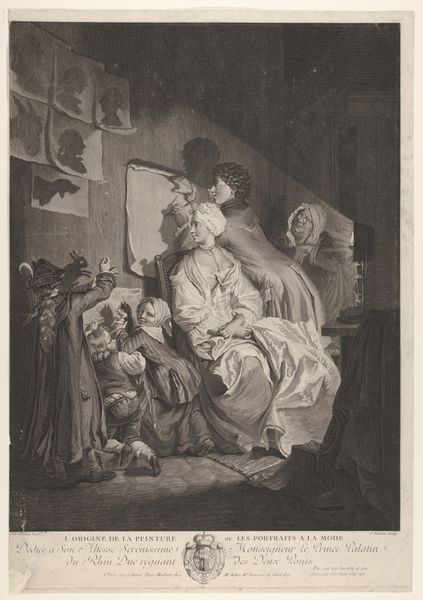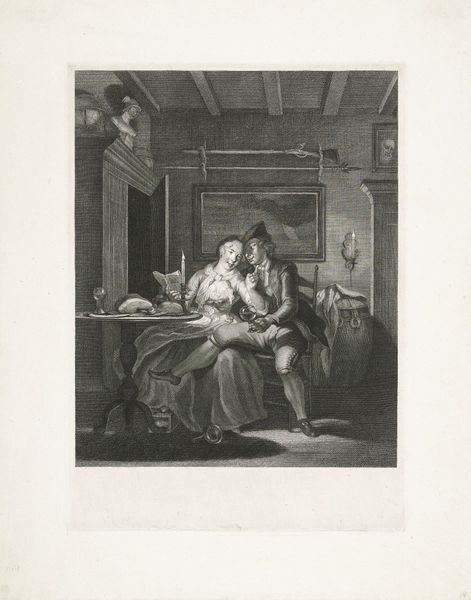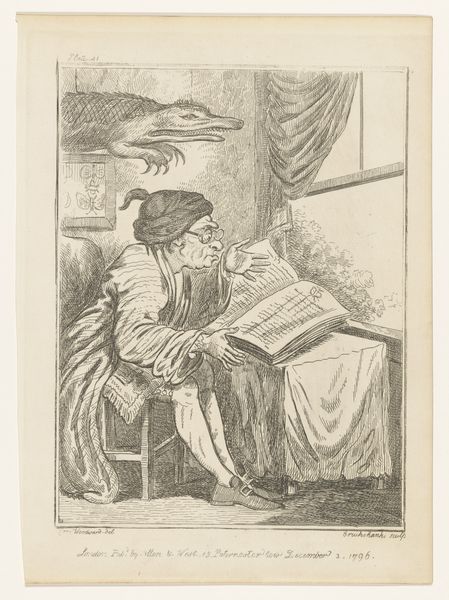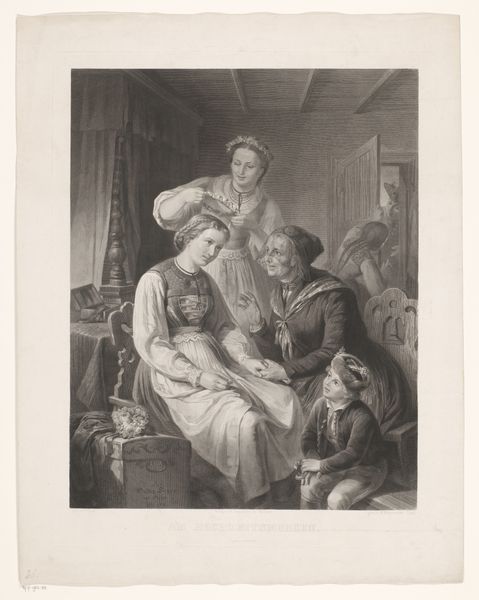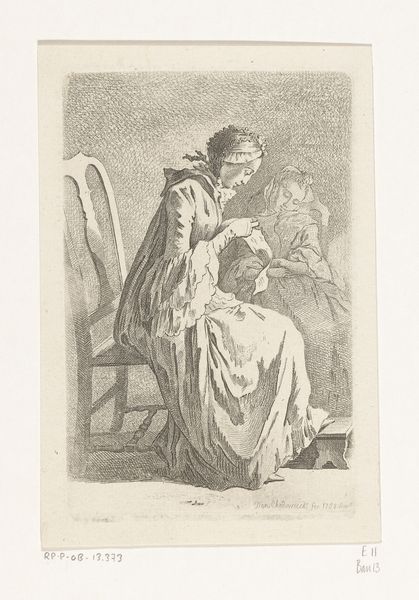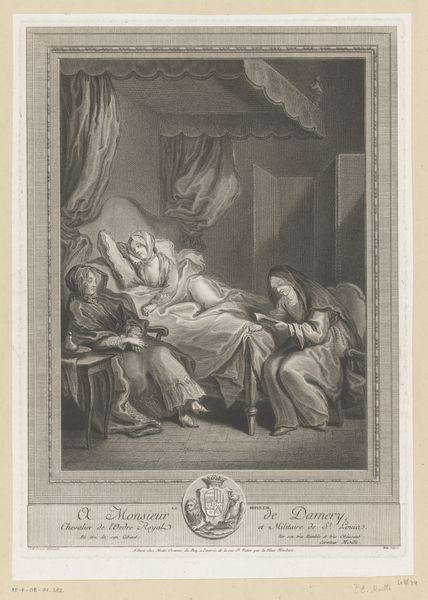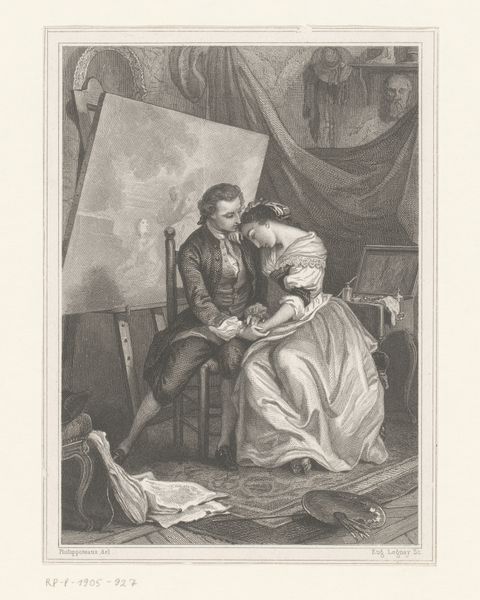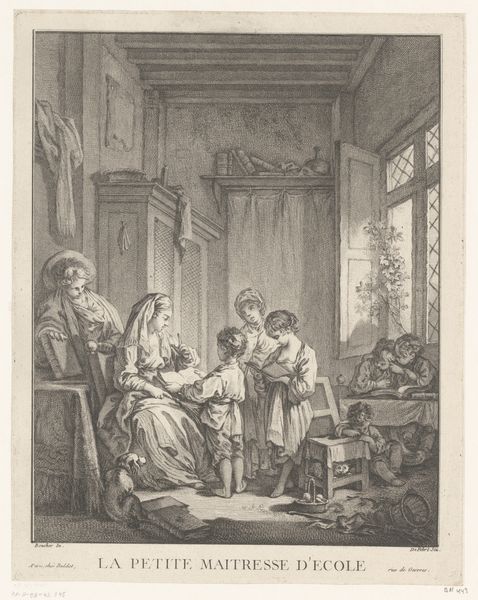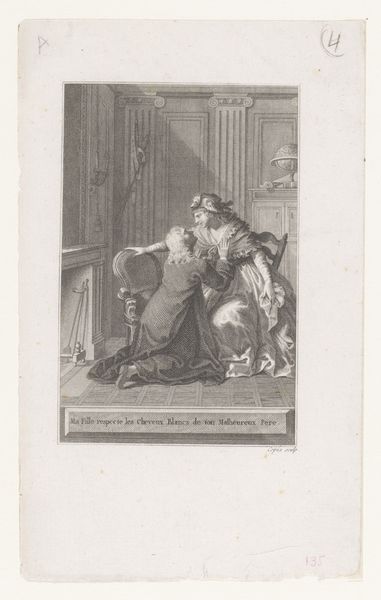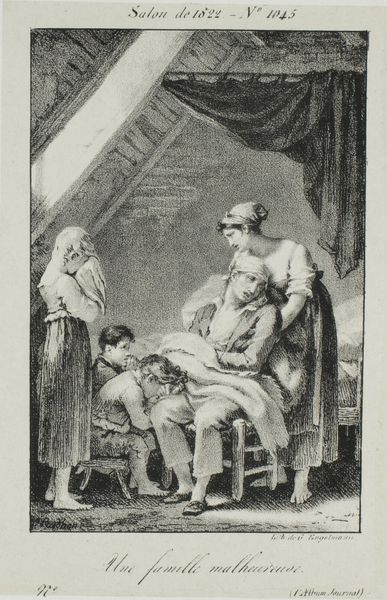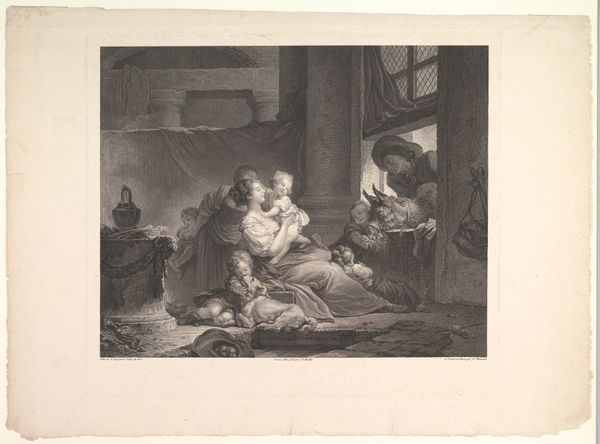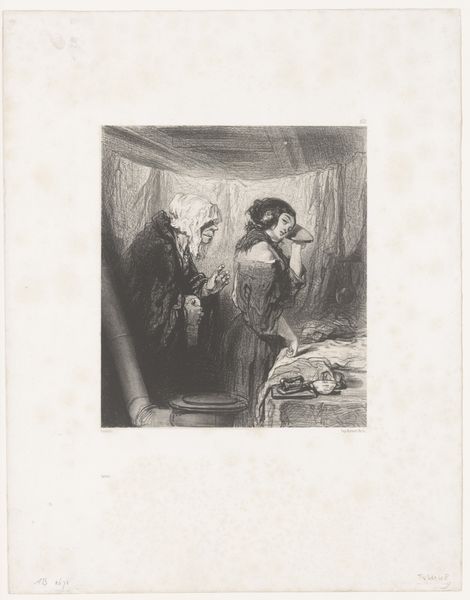
drawing, print, pencil
#
pencil drawn
#
drawing
#
narrative-art
# print
#
pencil sketch
#
charcoal drawing
#
figuration
#
pencil drawing
#
romanticism
#
pencil
#
history-painting
Dimensions: Image: 10 1/8 x 7 in. (25.7 x 17.8 cm) Sheet: 11 7/8 x 7 15/16 in. (30.1 x 20.2 cm)
Copyright: Public Domain
Here we see Eugène Delacroix's 1834 lithograph, depicting a tense encounter between Hamlet and his mother, Queen Gertrude. The embrace is central – a motif laden with ambiguity. Is it tenderness or manipulation? The Queen's pallor and Hamlet's clutching hand suggest a deeper conflict. Consider the motif of the embrace, an ancient gesture found in countless artworks throughout history. Think of the Roman sculptures depicting conquered enemies being embraced, symbolizing subjugation. Or the Christian iconography of the prodigal son, representing forgiveness and reconciliation. Here, Delacroix inverts these associations. The embrace becomes a site of psychological warfare, reflecting the emotional turmoil of Shakespeare's play. It's a powerful example of how archetypal gestures can evolve, charged with new meanings through the artist's hand and the viewer's subconscious interpretation. The artist engages us on a visceral level, tapping into our deepest fears and desires. As we see, these motifs don't exist in a linear progression. Instead, they resurface, evolve, and take on new meanings depending on the cultural moment.
Comments
No comments
Be the first to comment and join the conversation on the ultimate creative platform.
